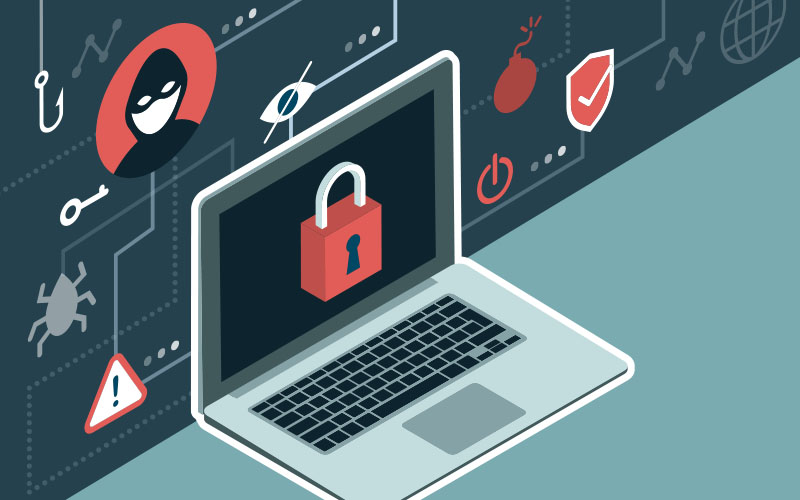August 3, 2021

There are so many ways that we use technology. Many of us have desktop computers, laptops, tablets, smartphones or smartwatches. And unfortunately, there isn’t a quick and easy answer to whether a desktop or mobile device is more secure. All of these devices pose security risks, so it’s important to understand the similarities and the differences to reduce your risk of personal information reaching the wrong hands.
It is well known that computers need security. It is common knowledge that our computers can be infected with viruses and that we can fall victim to scams and breaches. However, security on our mobile devices is less ingrained in our minds. Following are a few things to consider, regardless of the device you’re operating on, to ensure your information remains secure.
Install Updates
No matter the device, cyber criminals will always try to find an easy way to hack into them. Every device runs an operating system, and you will want to make sure you are always on the most recent operating system by ensuring you are updating your software when you see the option pop up on your screen. Some updates are automatic, while others require you to approve it or schedule it. Updates to your operating system ensure that you have the most recent protection against security flaws in the outdated version.
Passwords
You will also want to make sure you have a password to get into your system, even on a mobile device. Most people do not consider the possibility that their devices could be stolen or lost. In the event that either of these occur, if your device is not password protected, there is a higher likelihood that your personal information can be compromised.
In addition to using a passcode on your mobile device and password on your computer, utilizing a two-factor authentication method will provide further protection. Two-factor authentication works by requiring two forms of identification to access a system. An example of two-factor authentication is after typing in your password to log in to an application, the application prompts for additional verification, like a code that is sent to your mobile device via text message. You will have to provide both your password and the verification code to log into the application to ensure that you are who you say you are. This type of two-factor authentication exists on both desktop and mobile devices.
Apps
One aspect unique to mobile devices is mobile apps. There are thousands of mobile apps that are available to install on mobile devices. However, some apps are more secure than others. Both the Apple Store (for Apple devices) and the Google Play Store (for Android devices) conduct security checks on all apps before they are made available for download. However, Android allows users to download apps from other sources. We highly recommend not downloading these apps. Cyber criminals can easily create and distribute mobile apps that can infect your mobile devices and steal your data.
Further, many applications collect unnecessary information from your device. Many mobile apps will track your location, ask for access to your contact list, microphone, camera, and often even your photos. When you enable these permissions, it may allow the creator of the app to share or sell that information to others which can leave you at risk of losing your personal information. Blocking applications from accessing your data and deleting any unnecessary apps will keep your device most secure.
Phishing
Phishing emails remain the biggest threat on all types of devices. Every individual with an email account has likely received an email that appears as though it comes from a legitimate source, but it is truly an impersonation from a cyber criminal. These emails are known as phishing emails and cyber criminals are hoping to trick whoever they can into clicking on them and supplying passwords, credit card information or other personal information they can use against you. Whenever a phishing email is opened and a malicious link or attachment is clicked, there is a risk of a data breach. Email threats can be received on any device, so it’s important to second guess the authenticity of any email you receive before clicking on it — and especially before opening any attachments!
All of our devices are powerful tools we want to continue to use safely in both our business and personal lives. Because there is no way to ensure we are always 100% secure on any device, it’s imperative to stay knowledgeable on the ways we know to protect ourselves and our data. We are ultimately the best defense at detecting and stopping threats by making informed decisions to protect ourselves on our devices. So, what’s our best advice to you? Stay alert, stay-up-to-date, and think before you click!




